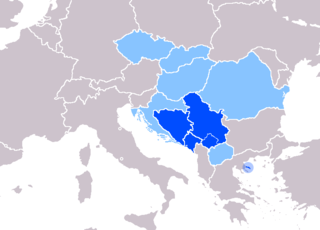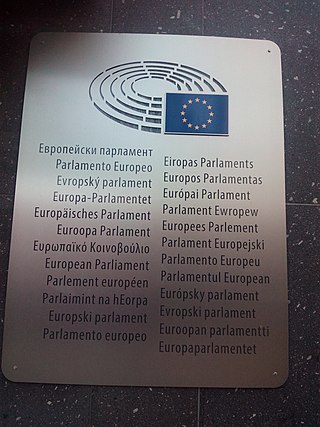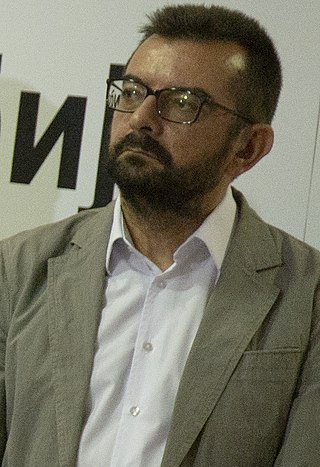
Bosnia and Herzegovina, abbreviated BiH or B&H, sometimes called Bosnia–Herzegovina and often known informally as Bosnia, is a country in Southeastern Europe, located in the Balkans. Bosnia and Herzegovina borders Serbia to the east, Montenegro to the southeast, and Croatia to the north and southwest. In the south it has a narrow coast on the Adriatic Sea within the Mediterranean, which is about 20 kilometres long and surrounds the town of Neum. Bosnia, which is the inland region of the country, has a moderate continental climate with hot summers and cold, snowy winters. In the central and eastern regions of the country, the geography is mountainous, in the northwest it is moderately hilly, and in the northeast it is predominantly flat. Herzegovina, which is the smaller, southern region of the country, has a Mediterranean climate and is mostly mountainous. Sarajevo is the capital and the largest city of the country followed by Banja Luka, Tuzla, Zenica and Mostar.

The Balkans, corresponding partially with the Balkan Peninsula, is a geographical area in southeastern Europe with various geographical and historical definitions. The region takes its name from the Balkan Mountains that stretch throughout the whole of Bulgaria. The Balkan Peninsula is bordered by the Adriatic Sea in the northwest, the Ionian Sea in the southwest, the Aegean Sea in the south, the Turkish straits in the east, and the Black Sea in the northeast. The northern border of the peninsula is variously defined. The highest point of the Balkans is Musala, 2,925 metres (9,596 ft), in the Rila mountain range, Bulgaria.

Central Europe is an area of Europe between Western Europe and Eastern Europe, based on a common geography, historical, social and cultural identity. The concept of "Central Europe" appeared in the 19th century.

Croatia, officially the Republic of Croatia, is a country at the crossroads of Central and Southeast Europe. Its coast lies entirely on the Adriatic Sea. It borders Slovenia to the northwest, Hungary to the northeast, Serbia to the east, Bosnia and Herzegovina and Montenegro to the southeast, and shares a maritime border with Italy to the west and southwest. Its capital and largest city, Zagreb, forms one of the country's primary subdivisions, with twenty counties. The country spans 56,594 square kilometres, and has a population of nearly 3.9 million.

The economy of Croatia is a high-income, service-based social market economy with the tertiary sector accounting for 70% of total gross domestic product (GDP). Croatia has a fully integrated and globalized economy. Croatia's road to globalization started as soon as the country gained independence, with tourism as one of the country's core industries dependent on the global market. Croatia joined the World Trade Organization in 2000, NATO in 2009, has been a member of the European Union since 1 July 2013, and it finally joined the Eurozone and the Schengen Area on 1 January 2023. Croatia is also negotiating membership of OECD organization, which it hopes to join by 2025. Further integration into the EU structures will continue in the coming years, including participation in ESA, CERN as well as EEA membership in the next 24 months.

The euro is the official currency of 20 of the 27 member states of the European Union (EU). This group of states is officially known as the euro area or, commonly, the eurozone, and includes about 344 million citizens as of 2023. The euro is divided into 100 cents.

Serbian is the standardized variety of the Serbo-Croatian language mainly used by Serbs. It is the official and national language of Serbia, one of the three official languages of Bosnia and Herzegovina and co-official in Montenegro and Kosovo. It is a recognized minority language in Croatia, North Macedonia, Romania, Hungary, Slovakia, and the Czech Republic.

Bosnian, sometimes referred as Bosniak language, is the standardized variety of the Serbo-Croatian pluricentric language mainly used by ethnic Bosniaks. Bosnian is one of three such varieties considered official languages of Bosnia and Herzegovina, along with Croatian and Serbian. It is also an officially recognized minority language in Croatia, Serbia, Montenegro, North Macedonia and Kosovo.

Istria County is the westernmost county of Croatia which includes the biggest part of the Istrian peninsula.

Split-Dalmatia County is a central-southern Dalmatian county in Croatia. The administrative center is Split. The population of the county is 455,242 (2011). The land area is 14.106,40 km2. Split-Dalmatia County is Croatia's most rapidly urbanising and developing region, as economic opportunities and living standards are among the highest alongside capital Zagreb and Istria County.

The European Union (EU) has 24 official languages, of which three – English, French and German – have the higher status of "procedural" languages of the European Commission. Irish previously had the lower status of "treaty language" before being upgraded to an official and working language in 2007. However, a temporary derogation was enforced until 1 January 2022. The three procedural languages are those used in the day-to-day workings of the institutions of the EU. The designation of Irish as a "treaty language" meant that only the treaties of the European Union were translated into Irish, whereas Legal Acts of the European Union adopted under the treaties did not have to be. Luxembourgish and Turkish, which have official status in Luxembourg and Cyprus, respectively, are the only two official languages of EU member states that are not official languages of the EU.

The English-speaking world comprises the 88 countries and territories where English is either an official, administrative, or cultural language. As of the 2000s, nearly 2 billion people globally speak English, making it the largest language by number of speakers, and the third largest language by number of native speakers, as well as the most geographically widespread language. The regions where English is natively spoken by the majority of the population, due to cultural connections to England, are termed "the Anglosphere". Speakers of English are called Anglophones.

The Josip Juraj Strossmayer University of Osijek, commonly known as the University of Osijek (UNIOS), is a public university based in Osijek, Croatia. Established in 1975, it is the flagship institution of higher education in Slavonia, and one of the largest and oldest universities in Croatia.

The Hungarian Sport Horse, Hungarian: 'Magyar sportló', is a modern Hungarian breed of sporting horse. Like the Furioso-North Star, the Gidran, and the Nonius, it was developed at the Hungarian State Stud Mezőhegyes, in Békés county in the Southern Great Plain region of south-eastern Hungary. At the end of 2012, the total number for the breed was reported to be 1091. The breeders' association is the Magyar Sportlótenyésztők Országos Egyesülete, or Association of Hungarian Sporthorse Breeders.

The following outline is provided as an overview of and topical guide to Croatia:

The following outline is provided as an overview of and topical guide to Hungary:

Janko Veselinović is a Serbian academic and politician. He is a professor at the University of Novi Sad Faculty of Agriculture and a Deputy of the National Assembly of Serbia. He holds a master's degree in contracts on commercial representation and a PhD on legal regulation of governance in domestic and comparative law.

The Croatian Meteorological and Hydrological Service is a public entity for meteorology, hydrology and air quality in Croatia.

Bobota is a village in the Municipality of Trpinja in Vukovar-Syrmia County in eastern Croatia. Regional Bobota Canal, the first major water management project in modern-day Croatia in the post-Roman Empire period, was named after the village.

Paprika is a spice made from dried and ground red peppers. It is traditionally made from Capsicum annuum varietals in the Longum group, which also includes chili peppers. Paprika can have varying levels of heat, but the peppers used for paprika tend to be milder and have thinner flesh. In some languages, but not English, the word paprika also refers to the plant and the fruit from which the spice is made, as well as to peppers in the Grossum group.



















